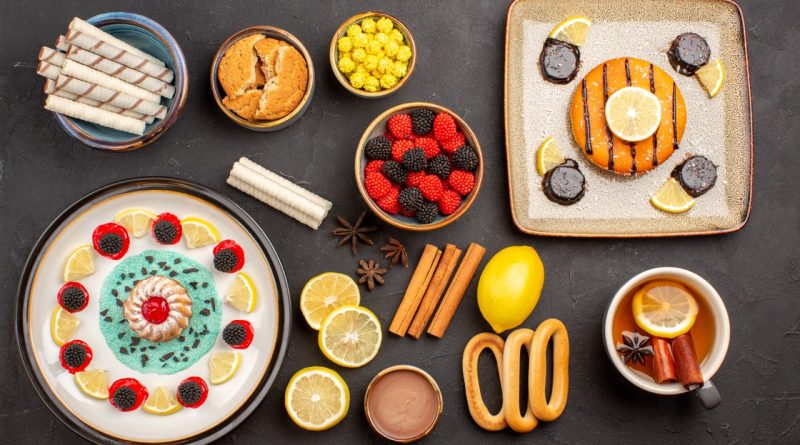How to Choose the Right Basting Brush
Choosing the right basting brush can make a significant difference in your cooking experience. Whether you’re glazing meats, applying marinades, or brushing butter onto pastries, having the right basting brush in your kitchen arsenal ensures that you achieve the best results. With a variety of options available, it is essential to understand the different types, materials, features, and maintenance tips to select the perfect tool for your culinary needs.
Understanding the Different Types of Basting Brushes Available
Basting brushes come in several types, each designed for specific cooking applications. The traditional brush is typically made with natural bristles, ideal for applying sauces or marinades on meats and vegetables due to their ability to hold a good amount of liquid. Silicone brushes, on the other hand, are flexible, heat-resistant, and easy to clean, making them a popular choice for both basting and cooking at high temperatures. They also don’t shed bristles, which can be a concern with natural brushes.
Another type of basting brush is the flat brush, which features a rectangular head and is perfect for applying glazes and sauces evenly across large surfaces, such as cakes or roasts. For those who enjoy outdoor grilling, specialized basting brushes are available that may include long handles or built-in reservoirs for easier application of marinades without the need for a separate dish. Understanding these types can help you better match your basting brush to your cooking style.
Lastly, consider the size of the basting brush you require. Smaller brushes are excellent for delicate tasks, such as glazing pastries, while larger brushes can cover more area quickly, making them suitable for grilling or roasting larger cuts of meat. Recognizing the variety of basting brushes available will help you choose one that fits your specific cooking needs.
Key Materials to Consider for Your Basting Brush
When selecting a basting brush, the materials used to construct the brush play a crucial role in its performance and durability. Natural bristles, often made from animal hair, are known for their ability to hold liquids and deliver them evenly. However, they can be less durable and may require more careful cleaning to prevent bacteria growth. These brushes may also shed, which can be an issue depending on the application.
Silicone is a popular alternative to natural bristles, as it offers several benefits. Silicone brushes are non-porous, making them resistant to bacteria and easier to clean. They are also heat-resistant, making them suitable for high-temperature cooking, including grilling and baking. Moreover, silicone brushes are designed to withstand wear and tear, ensuring they remain in excellent condition for longer periods.
Finally, some brushes are made from a combination of materials, such as wooden handles with silicone heads. This combination can provide the best of both worlds: the comfort and aesthetic of wood with the functionality and ease of silicone. When choosing your basting brush, consider how the materials align with your cooking habits and the level of maintenance you’re willing to invest.
Essential Features to Look for in a Basting Brush
Beyond material types, several essential features can greatly enhance your experience with a basting brush. First and foremost, consider the handle design. A sturdy, ergonomic handle is vital for comfort during extended use, especially when working with hot foods. Look for options that provide a good grip, as this will help you maneuver the brush easily without slipping.
Another feature to consider is the brush head’s shape and size. A brush with a wide head can cover large surfaces quickly, while a narrow brush is better suited for more precise applications, like glazing individual pastries. Additionally, look for brushes with angled heads, which can provide better access to hard-to-reach areas, ensuring even distribution of sauces and marinades.
Lastly, it’s beneficial to choose a basting brush with heat resistance. Brushes that can withstand high temperatures are particularly important for grilling and roasting, where direct heat exposure can damage lower-quality materials. Understanding these features will help you select a basting brush that not only meets your cooking needs but also improves your overall efficiency in the kitchen.
Tips for Maintaining Your Basting Brush for Longevity
Proper maintenance is key to ensuring the longevity of your basting brush. After each use, it’s essential to clean your brush thoroughly to remove any residue from marinades, oils, or sauces. For natural bristle brushes, hand washing with warm soapy water is recommended, as dishwashers can damage the bristles. Silicone brushes, on the other hand, can usually be placed in the dishwasher for convenient cleaning.
Another important step is to inspect the brush regularly for wear and tear. Look for any fraying bristles or signs of damage, as these can affect performance and lead to contamination in your food. Replacing worn brushes is crucial for maintaining hygiene and ensuring effective application. For those brushes with wooden handles, avoid soaking them in water, as prolonged exposure can cause the wood to swell and crack.
Finally, proper storage can play a significant role in maintaining your basting brush. Store brushes upright in a holder to prevent bristles from getting bent or damaged. If your brush has a removable head, storing it separately can also help to prolong its life. By following these maintenance tips, you can ensure that your basting brush remains a reliable tool in your kitchen for years to come.
Choosing the right basting brush involves understanding the various types available, the materials used, essential features, and proper maintenance techniques. By taking the time to select the right tool for your cooking methods and following these tips for care, you can enhance your culinary experience and achieve excellent results in your kitchen. Investing in a quality basting brush not only boosts your confidence while cooking but also contributes positively to the flavors and presentation of your dishes.
